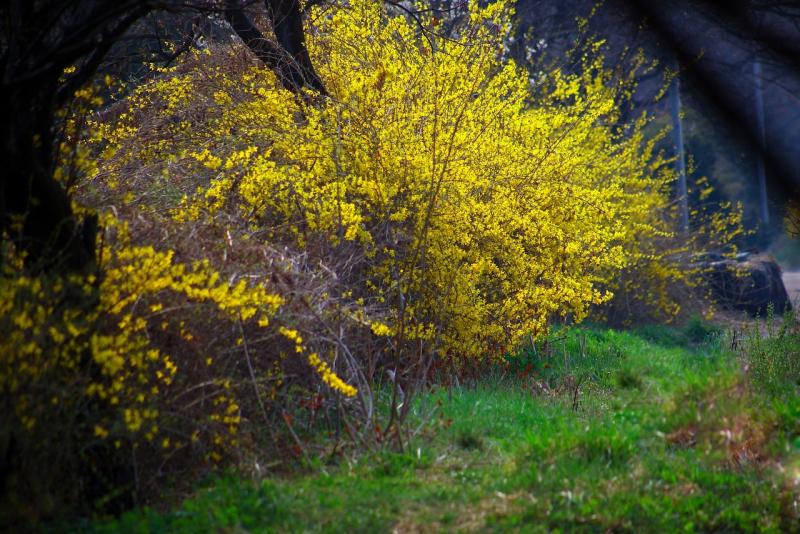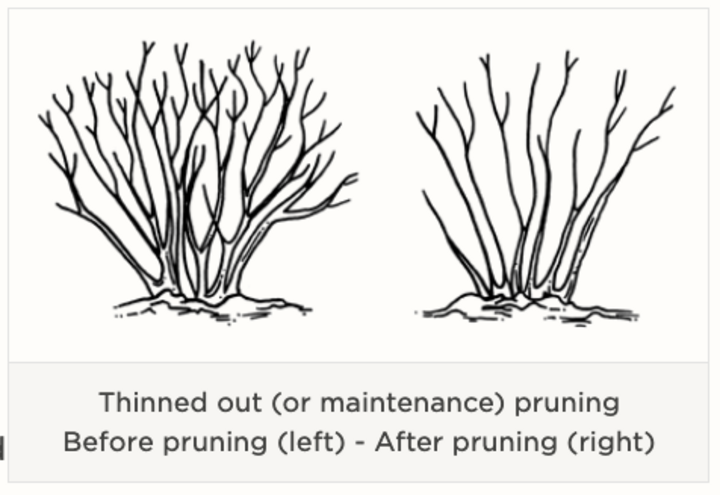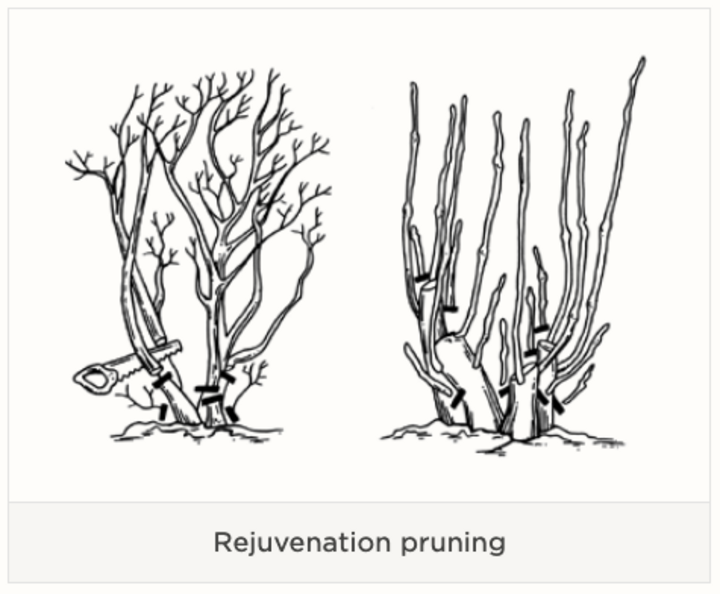Mary Jane Frogge, Nebraska Extension Associate

Forsythia shrubs are vigorous growers which frequently become overgrown and in need of rejuvenation pruning. Image by Pixabay.com
Correct pruning is one of the most essential of all management practices for shrubs in the home landscape. Proper pruning will help keep shrubs vigorous, maintain them in proper shape and form for a desirable landscape effect and add years to their usefulness.
Prune deciduous shrubs to maintain natural habit of growth; remove dead, diseased or broken branches; promote flower and fruit development; and encourage vigorous growth of plants. With most shrubs, the ideal time to prune is during the dormant season, before new growth begins. Spring flowering shrubs, such as forsythia and lilac, should be pruned shortly after flowering to avoid removing next years flower buds. Prune shrubs that bloom after the end of June in the winter or spring before new growth starts. These plants develop their flower buds during the spring growth period. Shrubs that bloom on current season's growth include rose-of-Sharon.

In general, most deciduous shrubs should be thinned out rather than sheared or cut back. Thinning out prevents excessive or unsightly branch formation at the top of the plant and maintains the natural habit of growth. Thinning is done by cutting off a branch where it is attached to the main stem.
This method, the least conspicuous of all types of pruning, is best used on plants that are too dense. To develop branches that grow toward the outside of the plant, remove the inward growing branches and prune to an outward facing bud or branch. Prune branches at the point of attachment to another branch or back to a bud. Pruning just above a bud prevents dieback of the stem, and a new branch will develop from the bud.
Shearing causes dense growth to develop at the end of the branches. Such growth shades the rest of the plant, which gradually loses its lower foliage and becomes sparse and spindly looking. You can maintain plants at a given height and width for years by thinning out.
Thinning is best done with hand pruning shears, not hedge shears. Thin out the oldest and tallest stems first.

Older shrubs that have become too large or contain considerable unproductive wood should be rejuvenated. Start the process by removing 1/3 of the oldest, thickest branches as close to the ground as possible. Over the next two years, remove additional stems until the plant is completely rejuvenated with only the young stems.
New shoots that develop can be cut back to various lengths by the thinning out method, which encourages the development of strong branches.
Plants that often become overgrown and benefit from rejuvenation include forsythia, honeysuckle, spirea, viburnum, weigela and other fast growing types. These plants, if extensively overgrown, severely weakened or otherwise unhealthy, can be cut back to the ground but may not bloom for one or several years, depending on the rate of regrowth.
Images
- Feature image from Pixabay.com
- Line drawings from Nebraska Extension.